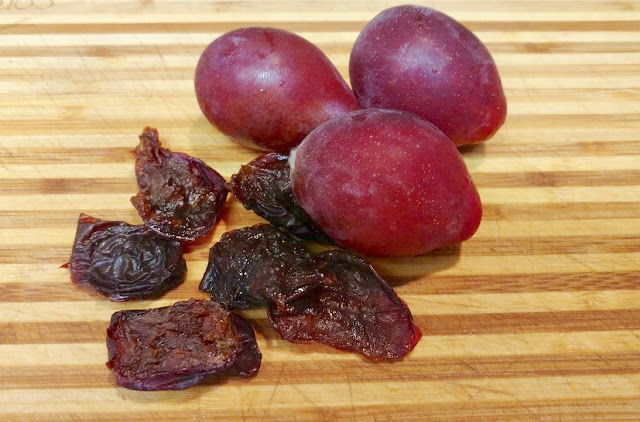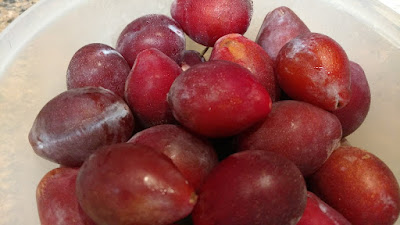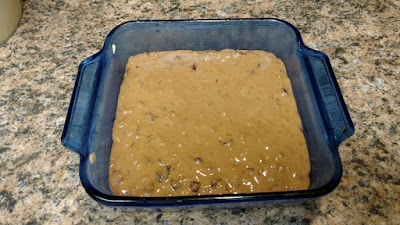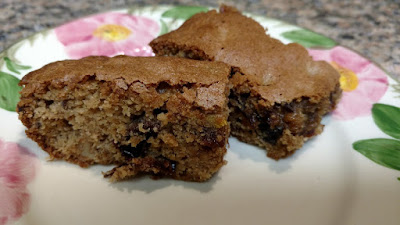
Recipe: Bake a batch of California prune bars

|
Call them dried plums or prunes; either way, they’re delicious – especially when made with fresh French or Italian plums.
These elongated “sugar plums” flourish in the greater Sacramento area. In the last weeks of summer and early fall, they’re readily available in farmers markets – or, if you're lucky, in your own backyard.
 |
| French and Italian plums grow well in the Sacramento region. |
Due to their high sugar content, these sweet ovals make good preserves, wine and brandy as well as fantastic prunes or dried plums. Freestone, these varieties let their pits pop out with little fuss.
Dried at home, these plums are soft and pliable. In a dehydrator, French or Italian plum halves takes about 24 hours to dry to perfection. Store the dried plums in the freezer; they’ll keep for at least a year.
What to do with those dried plums? Any recipe that calls for prunes, of course.
For September snacking, try this recipe for California prune bars, a variation of old-fashioned date bars. This recipe is adapted from a 1970 classic, “The California Cookbook” by former Los Angeles Times food editor Jeanne Voltz.
California prune bars
Makes 18 bars
Ingredients:

|

|
Comments
0 comments have been posted.Sacramento Digs Gardening to your inbox.
Sites We Like
Garden Checklist for week of April 14
It's still not warm enough to transplant tomatoes directly in the ground, but we’re getting there.
* April is the last chance to plant citrus trees such as dwarf orange, lemon and kumquat. These trees also look good in landscaping and provide fresh fruit in winter.
* Smell orange blossoms? Feed citrus trees with a low dose of balanced fertilizer (such as 10-10-10) during bloom to help set fruit. Keep an eye out for ants.
* Apply slow-release fertilizer to the lawn.
* Thoroughly clean debris from the bottom of outdoor ponds or fountains.
* Spring brings a flush of rapid growth, and that means your garden needs nutrients. Fertilize shrubs and trees with a slow-release fertilizer. Or mulch with a 1-inch layer of compost.
* Azaleas and camellias looking a little yellow? If leaves are turning yellow between the veins, give them a boost with chelated iron.
* Trim dead flowers but not leaves from spring-flowering bulbs such as daffodils and tulips. Those leaves gather energy to create next year's flowers. Also, give the bulbs a fertilizer boost after bloom.
* Pinch chrysanthemums back to 12 inches for fall flowers. Cut old stems to the ground.
* Mulch around plants to conserve moisture and control weeds.
* From seed, plant beans, beets, cantaloupes, carrots, corn, cucumbers, melons, radishes and squash.
* Plant onion sets.
* In the flower garden, plant seeds for asters, cosmos, celosia, marigolds, salvia, sunflowers and zinnias.
* Transplant petunias, zinnias, geraniums and other summer bloomers.
* Plant perennials and dahlia tubers for summer bloom.
* Mid to late April is about the last chance to plant summer bulbs, such as gladiolus and tuberous begonias.
* Transplant lettuce seedlings. Choose varieties that mature quickly such as loose leaf.